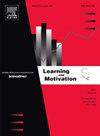Examining resurgence following alternating exposures to high- and low-magnitudes of alternative reinforcement
IF 1.7
4区 心理学
Q3 PSYCHOLOGY, BIOLOGICAL
引用次数: 0
Abstract
Resurgence is the increase in a previously reinforced and then extinguished target response due to a worsening of alternative-reinforcement conditions. Prior preclinical research has demonstrated less resurgence when testing with extinction (1) following lower than higher magnitudes of alternative reinforcement and (2) after alternating between availability and unavailability of alternative reinforcement (on/off) compared with a constant source of alternative reinforcement. In the present experiment with humans recruited via crowdsourcing, we evaluated whether alternating between high and low magnitudes of alternative reinforcement compared with a constant high magnitude alternative reinforcer would mitigate resurgence with either partial or complete (i.e., extinction) downshifts in reinforcer magnitude. High/low alternative reinforcement mitigated resurgence compared with constant alternative reinforcement when testing with a partial reduction in alternative reinforcement but not with extinction. As with on/off alternative reinforcement, high/low alternative reinforcement likely mitigates resurgence by increasing generalization between conditions. Though these findings show promise as a new approach to mitigate resurgence, further research with additional controls for reinforcer rates is needed to further isolate these effects.
检查交替暴露于高强度和低强度交替强化后的复苏
恢复是指由于替代性强化条件的恶化,先前被强化后又被熄灭的目标反应的增加。先前的临床前研究表明,与恒定的替代性强化源相比,在以下情况下进行灭绝测试时,复燃程度较低:(1) 替代性强化的强度较低而不是较高;(2) 替代性强化的可用性和不可用性(开/关)交替出现。在本实验中,我们以通过众包招募的人类为对象,评估了与恒定的高强度替代性强化物相比,交替使用高强度和低强度的替代性强化物是否会在强化物强度部分或完全(即消亡)下调时减轻复发性。与恒定的替代性强化物相比,高/低替代性强化物在部分减少替代性强化物而不是熄灭强化物的情况下,会减轻再次出现的情况。与 "开/关 "替代性强化一样,"高/低 "替代性强化也可能通过提高条件间的泛化程度来减轻复燃。虽然这些研究结果表明了作为一种新方法来缓解复燃的前景,但还需要进一步的研究,对强化剂的比率进行额外的控制,以进一步分离这些效应。
本文章由计算机程序翻译,如有差异,请以英文原文为准。
求助全文
约1分钟内获得全文
求助全文
来源期刊

Learning and Motivation
Multiple-
CiteScore
2.90
自引率
0.00%
发文量
53
期刊介绍:
Learning and Motivation features original experimental research devoted to the analysis of basic phenomena and mechanisms of learning, memory, and motivation. These studies, involving either animal or human subjects, examine behavioral, biological, and evolutionary influences on the learning and motivation processes, and often report on an integrated series of experiments that advance knowledge in this field. Theoretical papers and shorter reports are also considered.
 求助内容:
求助内容: 应助结果提醒方式:
应助结果提醒方式:


